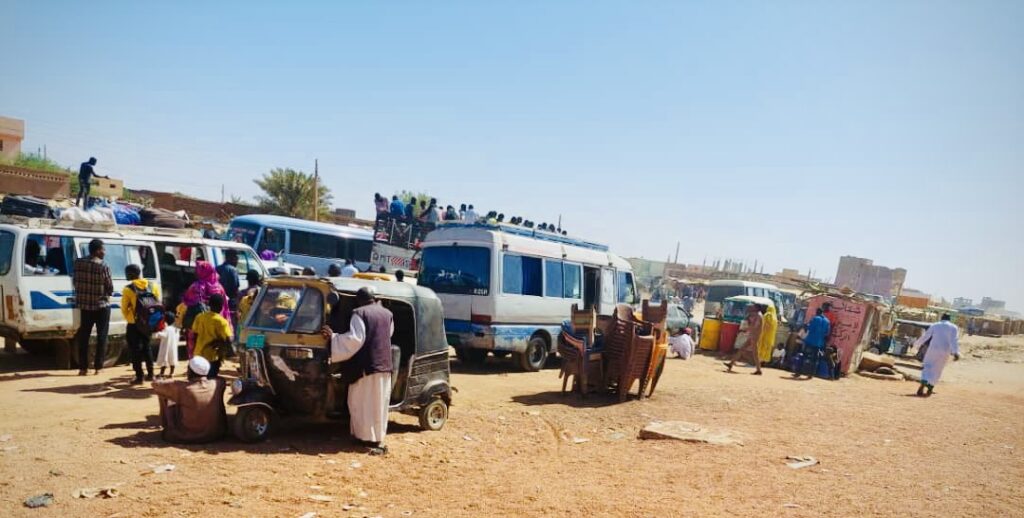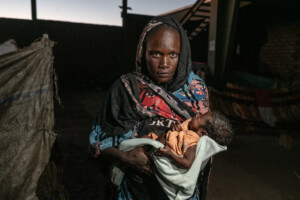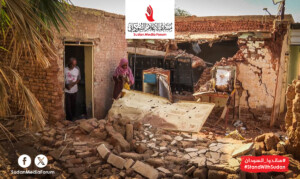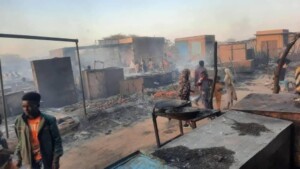Shelters face health crisis along Sudan’s Niles

Displaced wait at bus stop in Kosti, White Nile state (File photo)
Displaced people in White Nile and River Nile states are facing harsh humanitarian conditions as heavy rains flood shelters and bring about epidemic outbreaks of malaria and 150 cases of watery diarrhoea, particularly affecting children. Accessibility to humanitarian aid remains limited.
88 shelters in Kosti, White Nile state, are facing a health crisis with the outbreak of malaria and watery diarrhoea due to deteriorating sanitary conditions.
Emad Ahmed of the Kosti Emergency Committee told Radio Dabanga that most shelters in the state have been affected by recent heavy rains, leading to deteriorating sanitary conditions inside the shelters. Mosquitoes are spreading rapidly due to a lack of epidemic control measures. There have been around 150 cases of watery diarrhoea, with children being the most affected.
Save the Children and local health authorities are providing primary health services through a single health centre, which is “insufficient to meet the actual demand.” Ahmed explained that “only about 10 per cent of the actual demand is covered, with the centre accommodating 60 patients per day and operating limited opening hours.”
According to Ahmed, health authorities’ decision to provide free health services to the displaced has not been fully implemented. Hospital directors claim they lack the necessary equipment and medicines. This means that displaced people are sometimes forced to pay for medical examinations and specialist consultations, limiting treatment accessibility.
Kosti shelters
Shelters in Kosti are experiencing severe overcrowding, with around 200 families left without shelter and exposed to the rain. Imad explained that “families are either staying out in the open, or using dilapidated school sheds for shelter,” and urged authorities to open more schools to accommodate these families.
White Nile state is currently home to a significant refugee population, primarily South Sudanese. According to acting Governor Omar El Khalifa, the state hosts almost one million refugees from South Sudan. Among them, around 500,000 refugees are officially registered, and an additional 150,000 refugees have arrived from Khartoum.
On Sunday, during a visit by the Minister of Federal Government Mohamed Saleh to refugee camps for South Sudanese, El Khalifa highlighted that the refugee population in El Jabalein and El Salam in the state surpasses the number of residents in these the localities.
Efforts are underway to establish a new camp, Abu Dolou, to alleviate pressure on existing refugee camps due to the influx of returnees from Khartoum due to the ongoing war. There are currently 10 refugee camps in the localities of El Salam and El Jabalein in White Nile state, with more than 252,000 refugees registered with the UN refugee agency (UNHCR), in addition to refugees documented in various towns of the state. Registration is ongoing to ensure accurate records of the refugee population.
Some 13,500 people have been affected by heavy rains and flooding in North Darfur, North and White Nile states, according to UN Office for the Coordination of Humanitarian Affairs (OCHA).
River Nile
In Ed Damer, capital of River Nile state, approximately 2,000 people are living in shelters in critical humanitarian conditions with a severe shortage of food.
According to humanitarian aid volunteer Ali Kabbashi, “displaced people in Ed Damer are staying in houses that lack water and electricity. They receive only one meal a day, and there is a scarcity of drinking water. The environmental conditions in the shelter centres are also deteriorating.”
Other volunteers have raised concerns about severe food shortages potentially leading to complications among pregnant women, children, and the elderly.
Some of them added that only 10 per cent of humanitarian aid received was distributed to displaced people, “while the rest was sold off in markets”.
According to UN agencies, at least 24 million people across Sudan require aid, which is more than half of the population. The majority is facing severe hunger and six million people are on the brink of famine. Around 14 million children need humanitarian aid. Three million under-fives are malnourished. “The UN and 93 humanitarian partners have been delivering aid wherever they can.”











 and then
and then